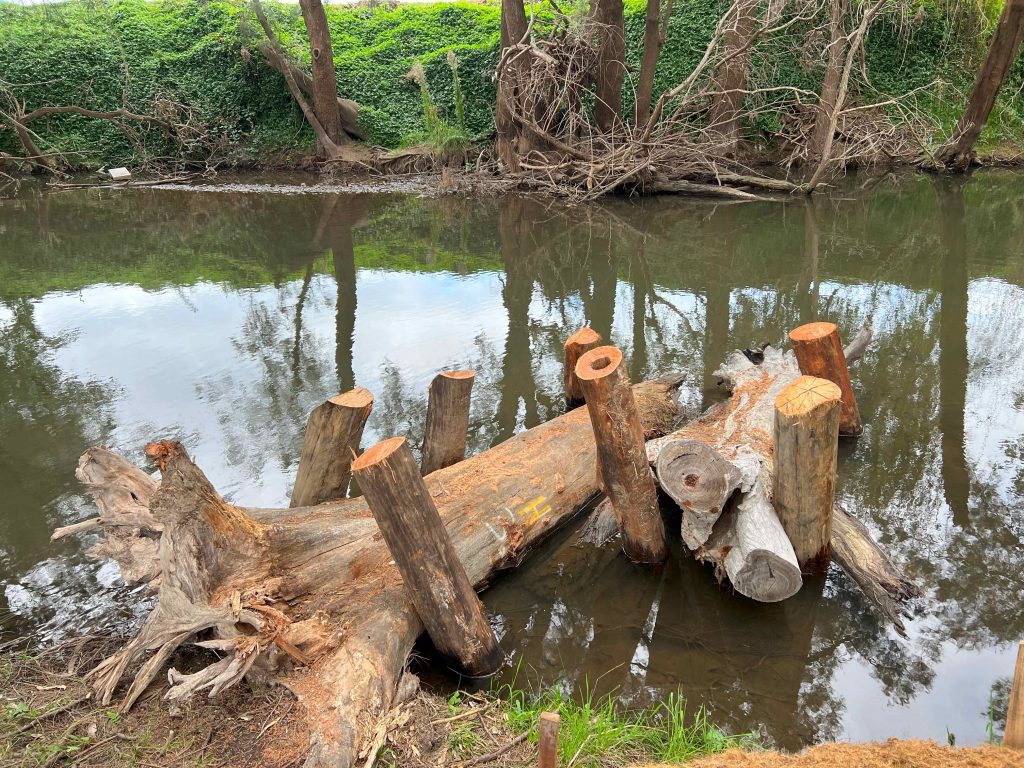
A number of gum trees removed during the construction of the first stage of the New England Solar project have been re-used to support greater biodiversity across a 30 kilometre stretch of the Peel River.
The trees are being used as snags in a section of the river between Tamworth and Chaffey Dam, providing important habit for native aquatic species, like the nationally threatened Murray Cod and Silver Perch.
Macroinvertebrates, or water bugs, graze on the wood and microbes that grow on the snags. The bugs then become a food source for native fish, frogs and birds while the trees provide a safe home and habitat for the animals.
Many of these species rely on snags to rest from fast river flows, shelter from predators, and as sites to attach eggs during breeding.

The snags are also an important way to prevent erosion and stabilise river banks.
They are a natural feature that accumulate over time as trees, branches and root masses fall into rivers due to flooding, wind or limb shedding.
About 50 trees removed across the 2,000 hectare solar farm site are being used in the re-snagging project, which is being managed by WaterNSW.
Around half of the trees have been carefully placed in the river to date, with the remaining trees to be relocated by the end of the year.
Read more about the project on the WaterNSW website or read our latest Project Update
